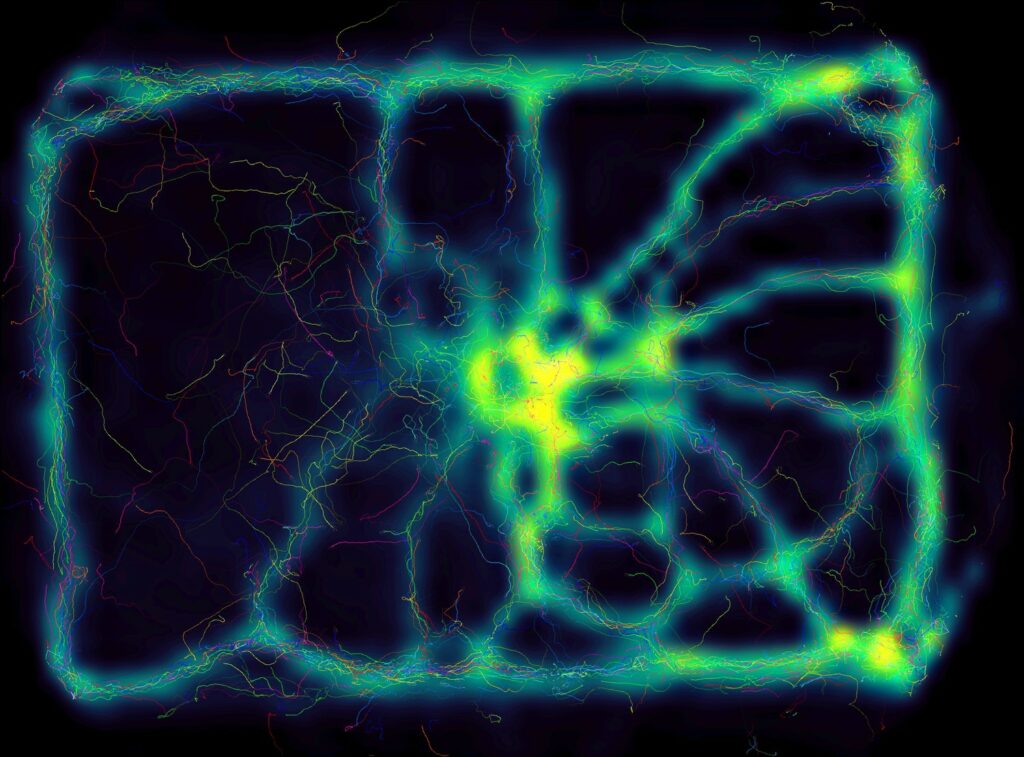Wildlife conservation is vital to safeguard our planet’s diverse ecosystems, which are increasingly threatened by human activities. Technology, particularly artificial intelligence (AI) and machine learning has emerged as a crucial ally in modern conservation efforts. This article highlights how AI and machine learning significantly impact wildlife preservation, focusing on tracking and protecting endangered species and combatting poaching.
AI and machine learning are pivotal in tracking and safeguarding endangered species by analyzing data from various sources, like satellite imagery and tracking devices. This information helps conservationists understand species behavior and population dynamics, leading to more effective protection strategies.
In the battle against poaching, AI systems help detect and predict illegal activities, enabling a proactive response to save animals from harm. Moreover, these technologies aid in ecosystem monitoring by processing environmental data, allowing for timely interventions and habitat restoration. Integrating AI and machine learning transforms wildlife conservation, reinforcing our commitment to preserving Earth’s natural wonders.
If you’re a student preparing to give a speech, you might wonder, “Can someone do my math?” It’s a common concern among students who want to deliver impactful presentations. Crafting a well-structured and engaging speech is no easy task, and seeking assistance is an intelligent approach. Now, let’s dive into the article.

Challenges in Tracking Endangered Species
Tracking endangered species is a crucial aspect of wildlife conservation. However, it is a challenging task due to the elusive nature of many species and the vast, remote habitats they inhabit. Traditional methods often fall short of providing accurate and real-time data.
GPS Tracking and Sensor Technologies
AI-powered GPS tracking and sensor technologies offer more precise and efficient wildlife monitoring. These technologies enable researchers to collect location data, movement patterns, and environmental variables, providing insights into endangered species’ behavior and habitat requirements.

image source
Image and Video Analysis
AI-driven image and video analysis tools can identify and classify species based on visual data. This allows for non-invasive monitoring through camera traps and drones, reducing disturbance to sensitive ecosystems.
Case Study of Successful AI-Based Tracking Programs
One exemplary success story involves using AI to track elusive snow leopards in the Himalayas. These magnificent creatures inhabit some of Earth’s most remote and rugged terrains, challenging traditional tracking methods. However, AI-powered camera traps and machine learning algorithms have revolutionized our ability to monitor snow leopards.
Researchers can gather crucial data about their population, behavior, and movement patterns by analyzing thousands of images and identifying individual leopards based on their unique spots and markings. This invaluable information informs targeted conservation strategies to protect these endangered big cats and their fragile mountain ecosystems.

image source
The Global Issue of Wildlife Poaching
Wildlife poaching poses a severe threat to endangered species, driven by illegal trade in wildlife products such as ivory, rhino horn, and pangolin scales. Poachers often operate in remote areas, making detection and prevention challenging.
Smart Camera Networks
AI-powered smart camera networks employ image recognition algorithms to detect and alert authorities to suspicious activities in protected areas. These systems can differentiate between animals and humans, helping to combat poaching effectively.
Predictive Analytics
Machine learning algorithms can analyze historical poaching data, weather patterns, and other relevant factors to predict potential poaching hotspots. This proactive approach enables law enforcement agencies to allocate resources more efficiently.
Examples of How AI is Being Used to Deter and Catch Poachers
In recent years, the application of artificial intelligence (AI) in wildlife conservation has yielded remarkable results, with real-world cases demonstrating its potential to protect some of our planet’s most endangered species.
In African national parks, rhino poaching has been a grave concern, threatening the existence of these majestic creatures. AI-based systems have stepped in as a powerful tool to counter this threat. These systems can detect and track poachers in real-time using sensors, cameras, and machine-learning algorithms. This allows park rangers to respond swiftly to potential threats, thereby reducing the incidence of rhino poaching and aiding in their conservation.
Similarly, AI-equipped drones have become indispensable in protecting elephants from poachers. These drones use AI capabilities, such as thermal imaging and pattern recognition, to locate elephants and detect signs of illegal activity in their habitats. By providing real-time surveillance, they enable rapid responses from authorities, safeguarding elephants and deterring poachers.
Source: https://unsplash.com/photos/panda-eating-bamboo-_9a-3NO5KJE
The Significance of Monitoring Ecosystems for Conservation
Ecosystems play a vital role in maintaining biodiversity. Monitoring their health and changes over time is critical to understanding and mitigating the impacts of climate change and human activity.
Remote Sensing and Satellite Imagery
AI algorithms can analyze remote sensing and satellite imagery to track deforestation, habitat loss, and other ecosystem changes. This information informs conservation strategies and policy decisions.
Data Analysis and Modeling
Machine learning models can process vast datasets from various sources, helping scientists gain insights into complex ecological relationships. This can inform decisions on habitat restoration, species reintroduction, and invasive species management.
Ethical Concerns
When addressing academic challenges such as crafting the best dissertation on AI in wildlife conservation, it becomes imperative for students to delve into ethical considerations, particularly within the realm of technology. When delving into privacy, data collection, and the decision-making capabilities of AI, it remains crucial to uphold the principles of responsible usage.
Consider, for example, the need for the best dissertation writing service, which is crucial for students. However, ethical concerns arise when we think about data collection. One clear example is how it can seriously affect indigenous communities. Unethical data collection can violate their rights and privacy, so we must carefully approach it.
Conclusion
In conclusion, AI is revolutionizing wildlife conservation by providing innovative solutions to tracking endangered species, protecting against poaching, and monitoring ecosystems. As we navigate AI’s complex challenges and ethical considerations in this field, it is crucial to recognize its immense potential for preserving Earth’s precious biodiversity.
This article serves as a call to action, urging continued research, investment, and responsible use of AI technologies to ensure a brighter future for wildlife and our planet.


